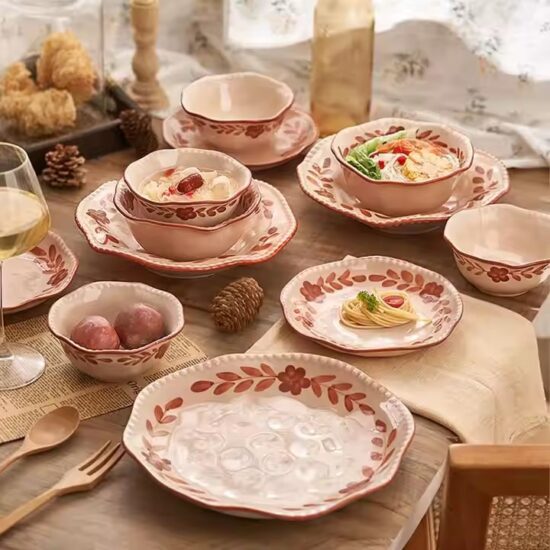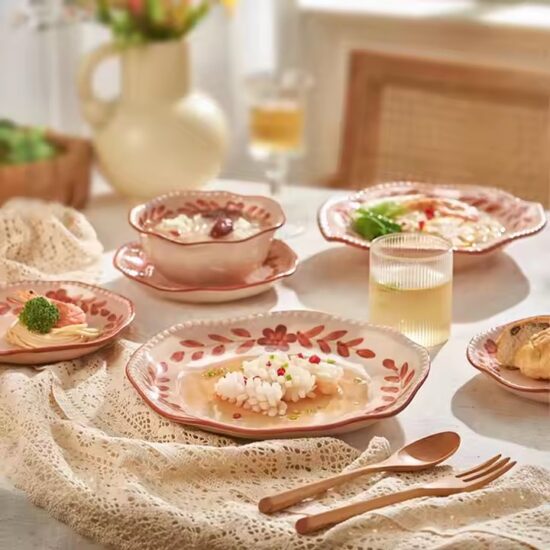bob@nbdho.com
Full Process of Customizing Ceramic Dinnerware Sets from Design to Delivery
Full Process of Customizing Ceramic Dinnerware Sets
Custom ceramic dinnerware is not just about shapes and colors—it’s about creating a product line that reflects your brand’s identity, meets your market demands, and ensures quality throughout the supply chain. Whether you’re a wholesaler, brand owner, or distributor, understanding the full customization process will help you make informed decisions and improve collaboration with your ceramic manufacturer.
Here is a step-by-step guide to how the custom ceramic dinnerware process typically works.
🔹 1. Concept & Idea Development
The process starts with your vision. This could be:
-
A sketch or image reference
-
A color scheme or brand theme
-
A product brief with size and style ideas
At this stage, manufacturers often help refine the concept, assess feasibility, and advise on the best materials and glazes for your needs.
🔹 2. Material & Glaze Selection
You’ll choose from:
-
Types of clay (porcelain, stoneware, earthenware)
-
Glaze finishes (glossy, matte, reactive, etc.)
-
Color options and combinations
Manufacturers may offer glaze catalogs, or create a new glaze based on your branding.
🔹 3. Shape and Mold Customization
If your design includes a new shape or contour:
-
Existing molds may be modified
-
New molds can be created via 3D modeling or hand carving
Custom molds require a one-time tooling fee but give full design freedom.
🔹 4. Logo & Decoration Techniques
Depending on your branding, you can add:
-
Decals (logos, patterns, full-wrap prints)
-
Embossed or debossed designs
-
Hand-painted details
Decoration methods are chosen based on durability and design complexity.
🔹 5. Sampling & Prototype Approval
Before mass production, you’ll receive one or more prototypes:
-
Check color, glaze finish, and shape
-
Ensure logo placement and printing quality
-
Evaluate weight, thickness, and overall feel
Revisions can be requested before final approval.
🔹 6. Mass Production
Once the sample is approved, production begins:
-
Forming – shaping via pressing, casting, or molding
-
Drying – ensuring stability before firing
-
Bisque firing – first firing at lower temperature
-
Glazing – applying chosen glaze
-
Glaze firing – second high-temperature firing
-
Decoration – applying decals or hand-painting (if applicable)
The process can take several weeks depending on order volume and design complexity.
🔹 7. Quality Control & Inspection
QC is done at several stages:
-
Post-forming checks for shape and size consistency
-
Post-firing checks for glaze uniformity and cracks
-
Final inspection for decoration, packing, and labeling
Some suppliers also allow third-party inspection.
🔹 8. Packaging & Branding Options
You can choose:
-
Individual or set packaging
-
Custom gift boxes or retail-ready packaging
-
Eco-friendly packaging options
Your logo or barcode can be added to packaging for retail or distribution purposes.
🔹 9. Logistics & Delivery
Depending on the shipping method:
-
Products are packed in bulk or sets, loaded onto pallets or containers
-
You choose FOB, CIF, or DDP terms
-
Manufacturers coordinate export paperwork and shipping schedules
Tracking and after-sales support are usually included by reliable suppliers.
✅ Summary: Why Customization Matters
Custom ceramic dinnerware sets allow you to:
-
Offer exclusive products that reflect your brand
-
Serve specific target markets (e.g., restaurants, giftware, online retail)
-
Control quality and cost at every stage
By understanding the full customization process, you can streamline collaboration, reduce lead times, and bring higher-value products to your customers.
📦 Looking to develop your own dinnerware line?
We offer full OEM/ODM services, including shape development, glaze matching, packaging design, and global delivery support.
📩 Contact our team to start your custom project today.

